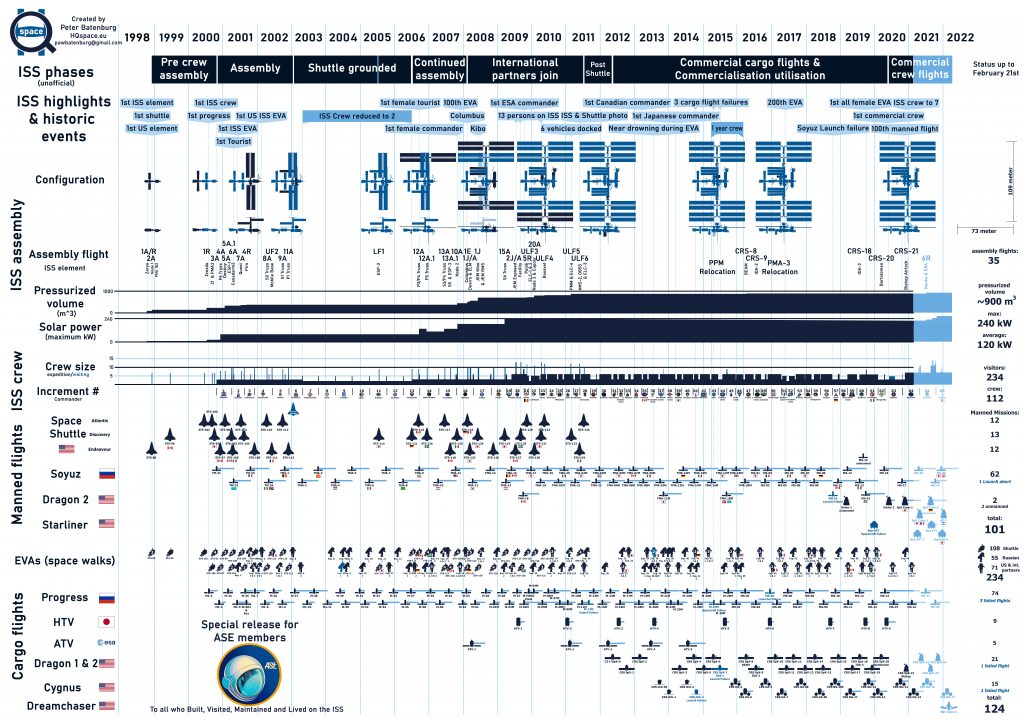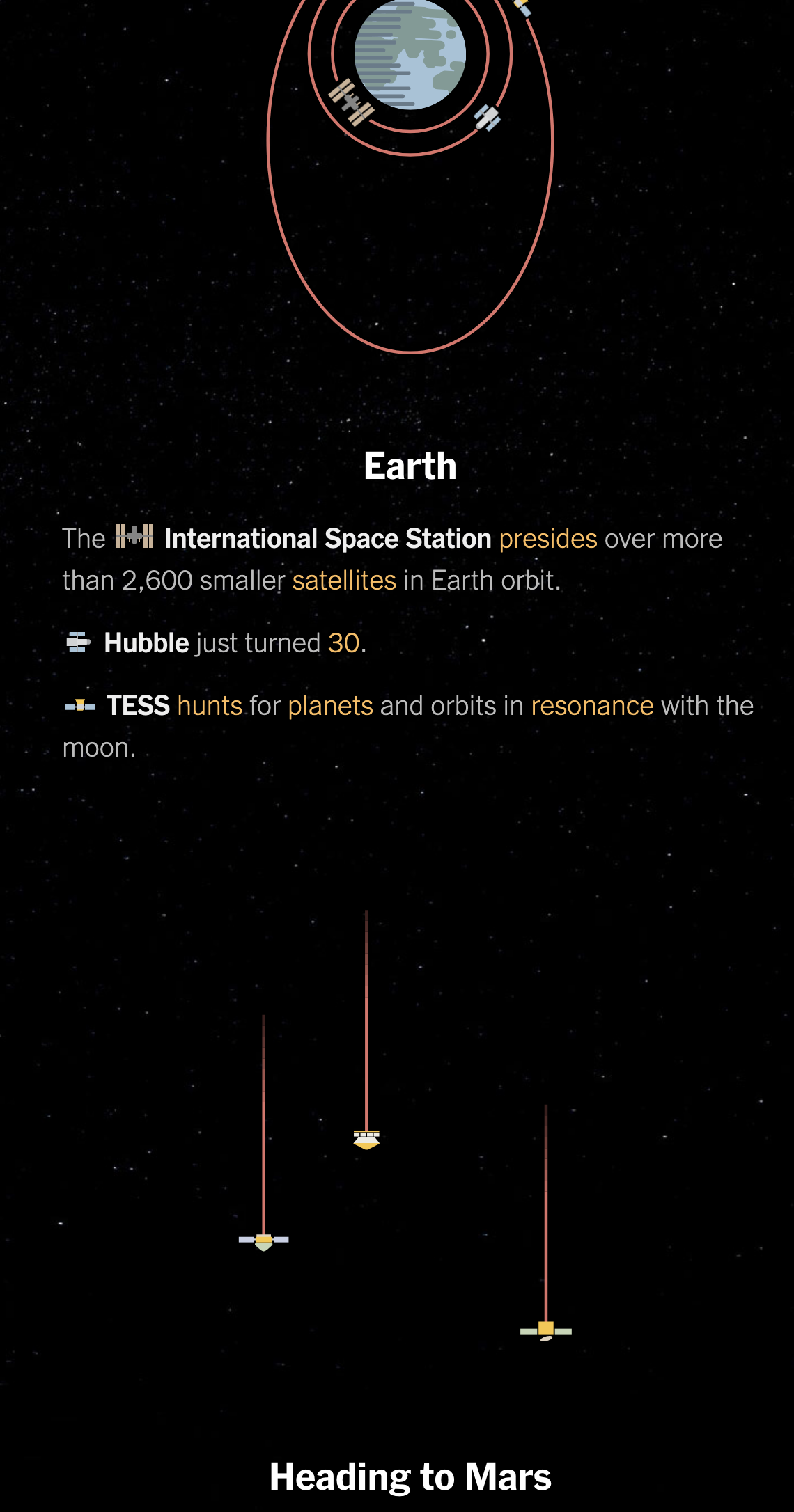When I was in high school, the United States would regularly spend space shuttles into orbit to help build this new thing: the International Space Station (ISS). In the aftermath of the Cold War, the nations of the world joined together to commit to building an orbital space station.
There was of course a time before the ISS, and I can recall many jokes being made about Mir, the Soviet then Russian space station. And before Mir there were other, though none as long-lasting. But I digress, we’re here today because recently Canadian astronaut Chris Hadfield tweeted a graphic made by Peter Batenburg that visually captures the history of the International Space Station.

I think my favourite element is the graphical representation of the expansion of the ISS in terms of its volume. I’ve seen similar sort of graphics showing the addition of modules and new components, but I can’t recall seeing the amount of space where people can live and work being captured.
But really, the whole piece is worthy of sitting down and enjoying. After all the ISS is only about 22 years old. But there are questions of how much longer it will remain in orbit. I’m not aware of any concrete plans to fund it beyond 2030 nor any plans for an eventual replacement.
We can only hope that the ISS and its successor remain an area that fosters international cooperation for the next thirty years.
Credit for the piece goes to Peter Batenburg.

